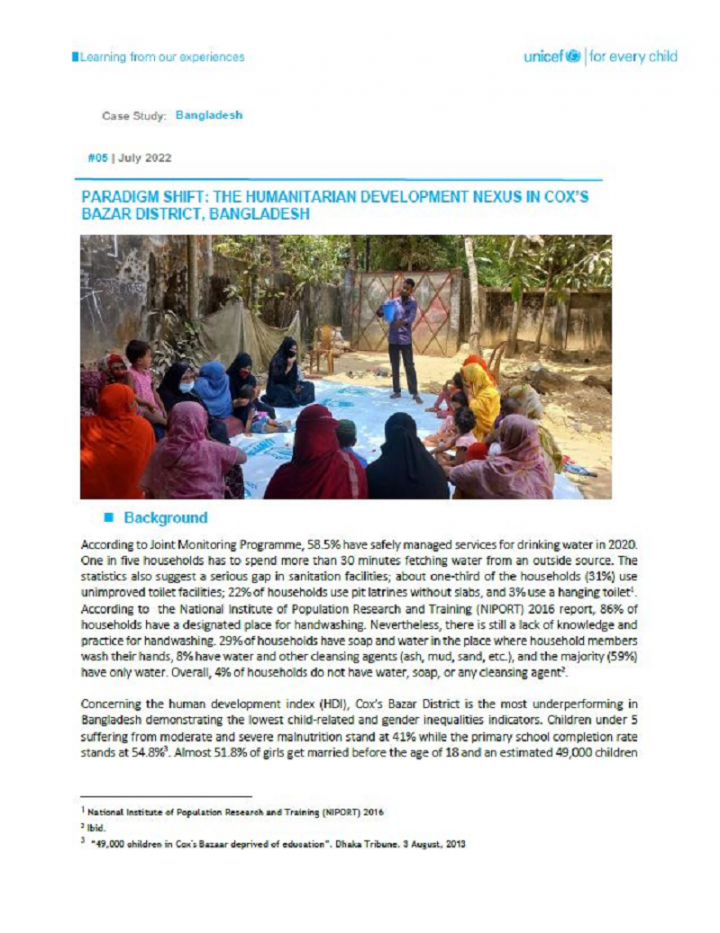PARADIGM SHIFT: THE HUMANITARIAN DEVELOPMENT NEXUS IN COX’S BAZAR DISTRICT, BANGLADESH
Mamun, Z. (2022)

Published in: 2022
Pages: 6
Publisher:
UNICEF
Author:
Mamun, Z.
Uploaded by:
SuSanA Admin
783 Views
22 Downloads
According to Joint Monitoring Programme, 58.5% have safely managed services for drinking water in 2020. One in five households has to spend more than 30 minutes fetching water from an outside source. The statistics also suggest a serious gap in sanitation facilities; about one-third of the households (31%) use unimproved toilet facilities; 22% of households use pit latrines without slabs, and 3% use a hanging toilet. According to the National Institute of Population Research and Training (NIPORT) 2016 report, 86% of households have a designated place for handwashing. Nevertheless, there is still a lack of knowledge and practice for handwashing. 29% of households have soap and water in the place where household members wash their hands, 8% have water and other cleansing agents (ash, mud, sand, etc.), and the majority (59%) have only water. Overall, 4% of households do not have water, soap, or any cleansing agent.
Bibliographic information
Mamun, Z. (2022). PARADIGM SHIFT: THE HUMANITARIAN DEVELOPMENT NEXUS IN COX’S BAZAR DISTRICT, BANGLADESH. UNICEF
Filter tags
English South Asia














